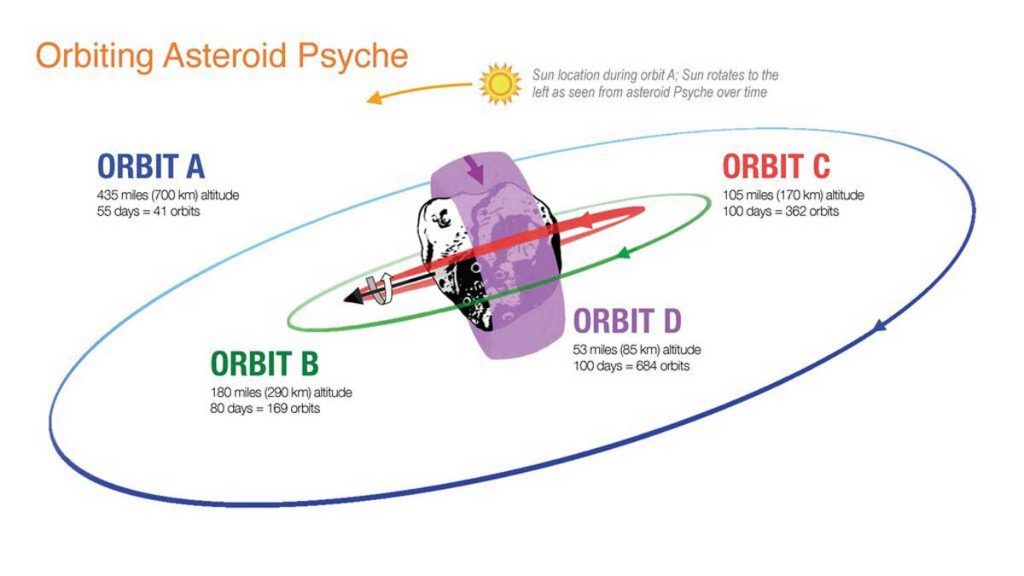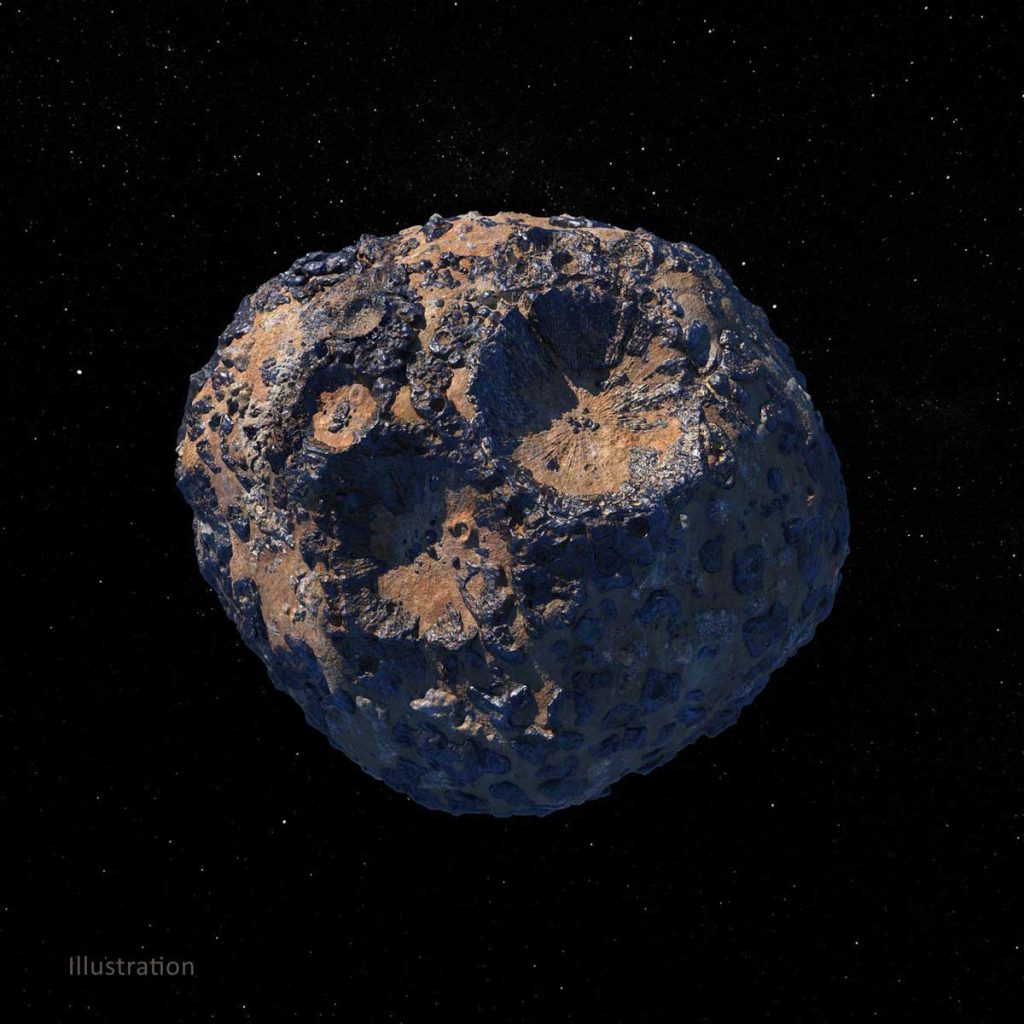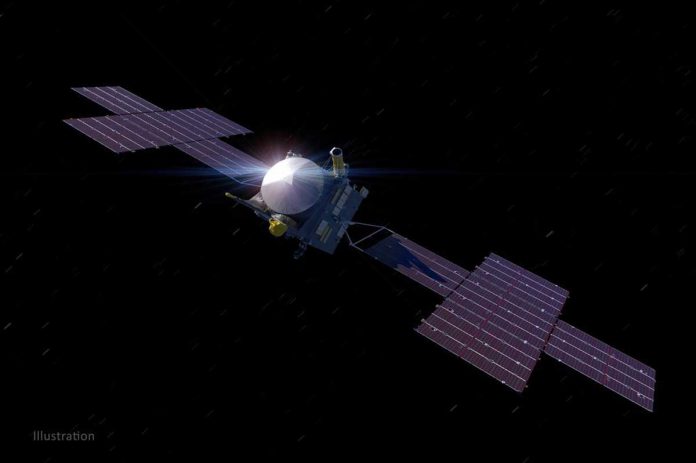NASA’s Psyche spacecraft will be launched in August 2022 and it will arrive at the asteroid belt in 2026. This spacecraft will orbit a world we can barely pinpoint from our own planet.
The target of NASA’s Psyche mission is a metal-rich asteroid named Psyche. This asteroid is situated in the main belt between Mars and Jupiter and this is an uncharted world in outer space. From space-based telescopes, Psyche appears as a fuzzy blur. But scientists know from radar data that its shape is like a potato and it spins on its side.
Scientists analysed the light reflected off the asteroid. Scientists hypothesize that Psyche is rich in metal. Scientists think it formed early in our solar system as a core of a planetesimal or maybe s primordial material that never melted. This mission aims to find out the answers of some fundamental questions about the formation of our solar system.
Arizona State University professor and a principal investigator of the Psyche mission, Lindy Elkins-Tanton said that if Psyche is a part of a metal core, then it is possible that it is a part of the very first generation of early cores in our solar system as well. But the scientists are not sure. Scientists have inquired about the material that built planets. They are trying to find the answers by real exploration.
Elkins-Tanton proposed Psyche as a NASA Discovery-class mission. Elkins-Tanton has selected it in 2017. Choosing the mission’s science instruments was a huge challenge to the scientists. As they do not know what exactly they are going to measure.
To determine what exactly made the asteroid and whether it’s part of a planetesimal core or not, scientists needed scientific instruments that could account Nickel, iron, different kinds of rock and metal mixed together.
Scientists selected a payload suite that includes a magnetometer which will measure any magnetic field. Several imagers to photograph and map the surface. Various spectrometers to find out what the surface of the asteroid is made of by measuring the gamma rays and neutrons emitted from it. Scientists have hypothesized about Psyche is made of.

Touring an unknown world
The scientists need to reach the asteroid and get into orbit before they can put those instruments to work. Psyche will be launched from NASA’s Kennedy Space Center in August 2022. The spacecraft will sail past Mars nine months later. It will use the planet’s gravitational force to slingshot itself towards the asteroid Psyche. The spacecraft will travel about 1.5 billion miles.
The spacecraft will start its final approach to the asteroid in late 2025. When the spacecraft will get closer to its target, the scientists will turn its cameras on. Then the visual of asteroid Psyche will be revealed for the first time. The imagery will help engineers get their bearings as well. They will prepare to slip into orbit in January 2026. The spacecraft’s initial orbit is about 435 miles high than the asteroid’s surface.
Psyche’s mission design and navigation team will laser-focus to measure the asteroid’s gravity field, during the time of its first orbit. The asteroid’s gravity force will keep the spacecraft in orbit. After understanding the gravity field of the asteroid, the team can safely navigate the spacecraft closer to the surface of the asteroid.
Psyche is lumpy and wider across than it is from top to bottom. It has an uneven distribution of mass. Some part of it is less dense like a sponge and some parts are tightly packed and more massive. The parts that have more mass will have higher gravity and will also have a stronger pull on the spacecraft.
The team of the scientists will use the spacecraft’s telecommunications system in order to solve the gravity-field mystery. They will measure subtle changes in the X-band radio waves which will be bouncing back and forth between the spacecraft and the large Deep Space Network antennas around Earth. Then engineers will be able to precisely determine the asteroid’s mass, gravity field, rotation and orientation.
The team of the researchers were working up scenarios and have drawn thousands of “possible Psyches”. They have drawn it from the variations in the asteroid’s density and mass. They will test all these models in computer simulations.

For 20 months, the spacecraft will be using its gentle electric propulsion system to dip into lower and lower orbits. Scientists will measure the gravity field more precisely as the spacecraft gets closer. The images of the surface will become higher resolution. This will allow scientists to improve their understanding of the body. The spacecraft will establish a final orbit about 53 miles above the surface.

